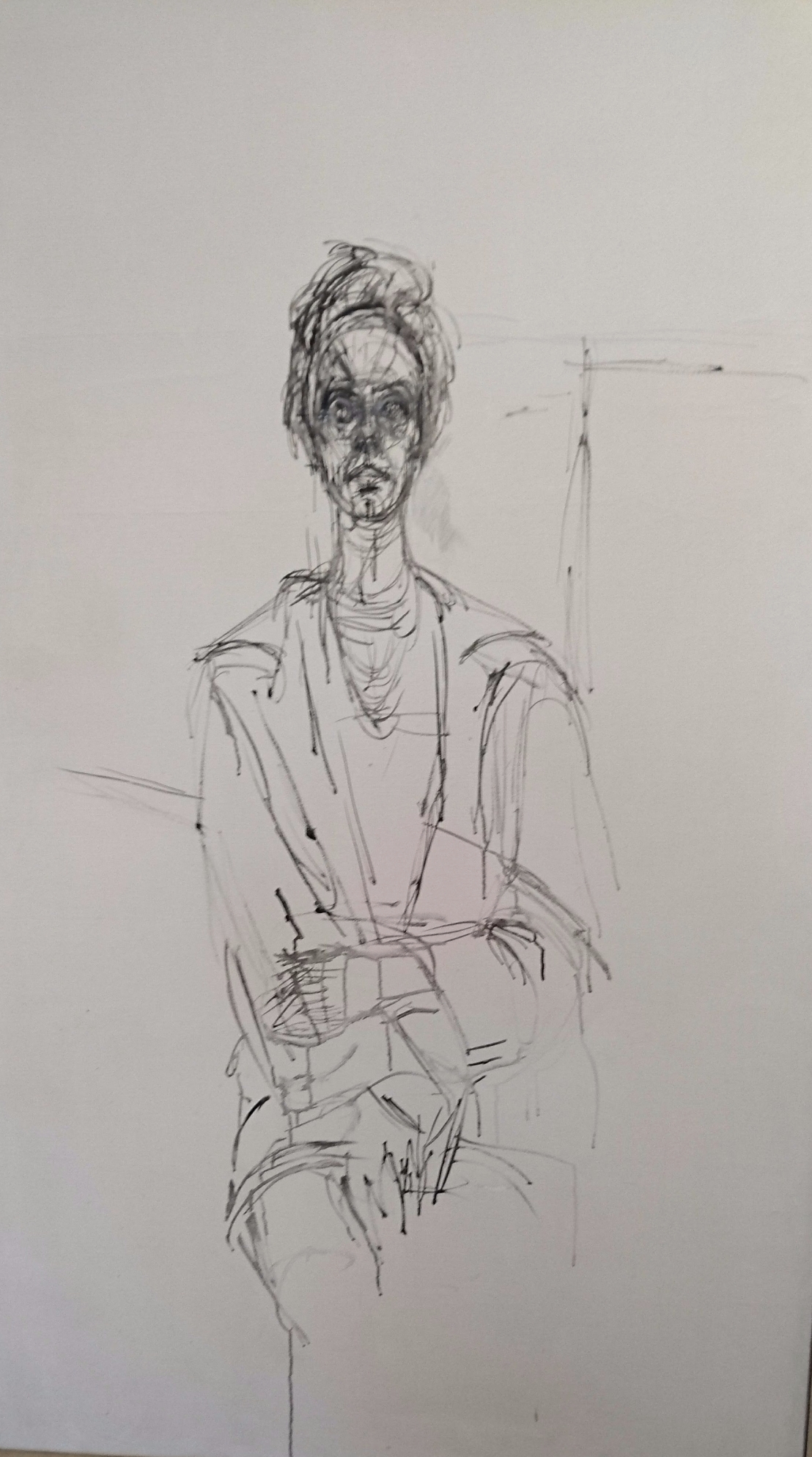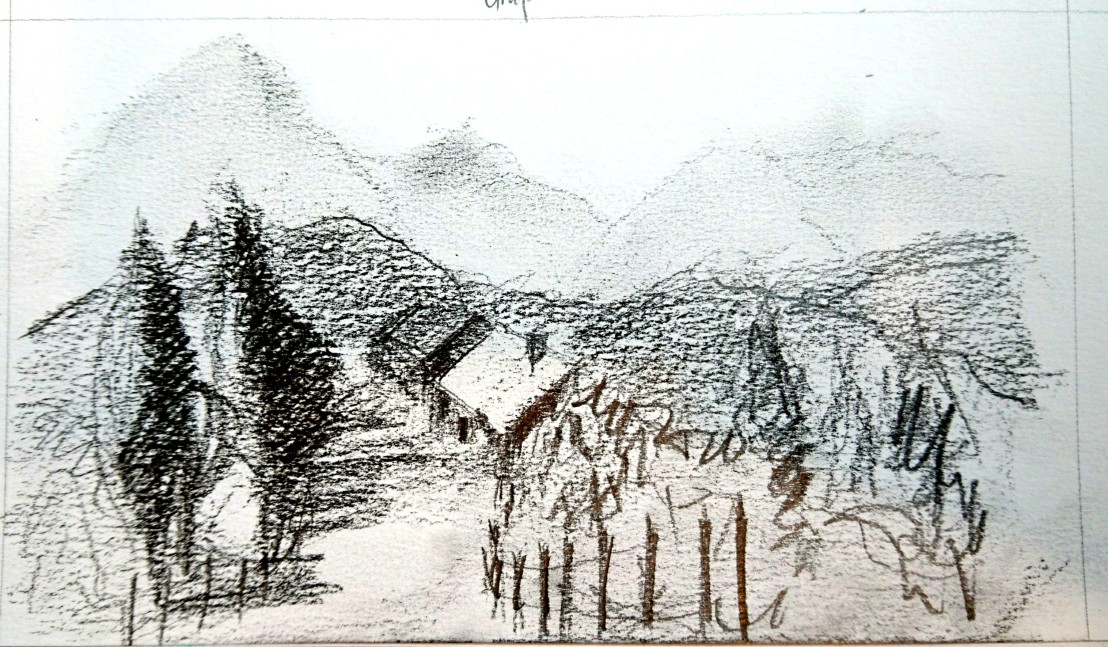During my recent business trip to Bogota Colombia, I was able to take time out to sketch a small part of the City and to visit two excellent Art Museums:
Art Museum of the Banco de la Republica and the Botero Museum:
I was fortunate to see an excellent collection of Latin America art and Colonial art as well as European Art.
Among the artworks my highlights were as follows:

In this painting, I sensed a sadness in this portrait of a Mulato native of Colombia. I was also intriqued by the effects of the apparently simple line on a multicoloured background. The uncovering of the breast and phallic simbols on the RH side – to me suggest rape or submission, even persecution.

This is perhaps a lovely portrayal of a volumptuous figure using coloured pencil on paper – that may help me in Part 4. Very light shading – modelling the figure to give a wonderful 3D effect. I also noted that there are no heavy lines in the figure – just enough to assist the shading/modelling.

This drawing in oil could easily be a line drawing in ink – this is an artist that provides a constant source of inspiration for Part 4 of the course.

Whilst studying in Part 4, I was impressed by the wonderful pencil sketches made by Corot – This a good example of foreground, middleground and background.

In this drawing I appreciated the modelling and textures in this drawing after my studies in Part 2. Botero’s skill at still life is also reflected in the modelling of his figures (and other subjects – such as trees). There is a deeper meaning within this drawing with the use of many symbols – such as the cross represented by the stalk of the apple, the peeled orange, the knife and the hammerhead of the bananas.

After reading about Auerbach and his work, it was a treat to see a work up close. Not a large painting. You can see eveidence of his technique of scraping off paint, repainting, struggling to find the a solution to the modelling, movement and atmostphere of the scene – a scene literally outside of his studio – a scene he walked past every day and made many studies of – both in oils and pencil. This is particularly relevant to my current work on Townscapes.

This painting was the most moving for me – I visited Chagall’s immense retrospective at the Royal Academy, London just before he died with my late father. This was a very special memory for me and I have never ceased to be amazed by the imagination, vibrant use of colour and sheer emotion within Chagalls paintings. This painting made a few years before his death when he was a staggering 94 years old includes all the memories and motifs from his life and work – a self portrait? An inspration for me for Part 4 and the next course of POP.

This is a key work by a Spanish artist who settled in Colombia and worked with other artists interested in figuration/abstraction – using the nude, landscape and historical issues as a subject for their works. In this painting Obregon’s work is a visual metaphor linking the nation in conflict with a pregnant woman, whose figure blends into the mountainous landscape. A relevant work to my current studies in Part 3 Expanse.

Unfortunately I do not have details of this installation/sculpture – but it reminded me of the work of Julie Mehrethu in its explosive nature and effective use of pieces strategically placed to exagerrate the feeling of space and depth. An awesome piece of work and I am sure a Curators nightmare to install!





 Most of the red lines appear to converge on an eyeline a little higher than I have drawn in – indicating that my construction was very good with few mistakes. As in Exercise 1, in the foreground of the image I need to exaggerate the perspective more to achieve the correct result.
Most of the red lines appear to converge on an eyeline a little higher than I have drawn in – indicating that my construction was very good with few mistakes. As in Exercise 1, in the foreground of the image I need to exaggerate the perspective more to achieve the correct result.




